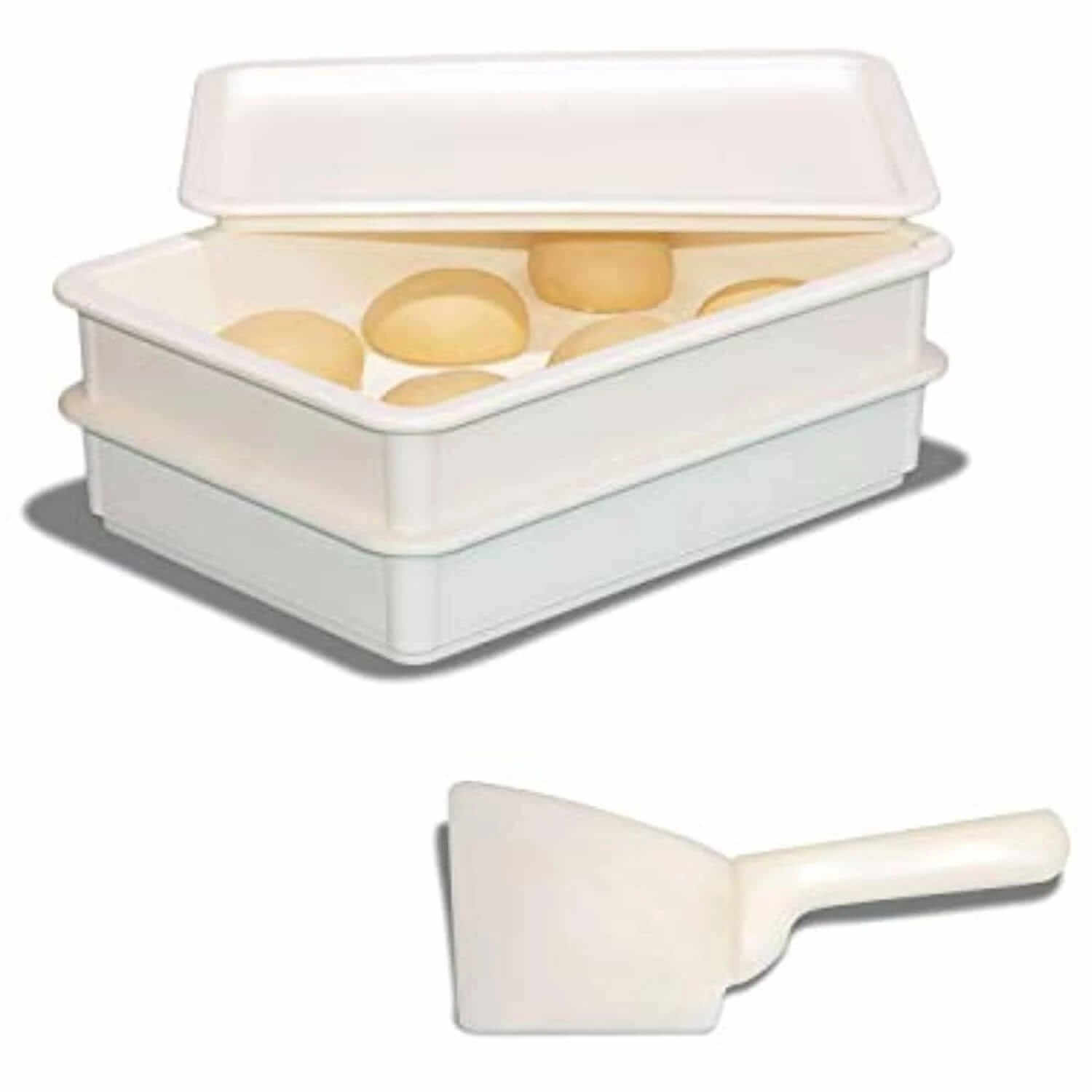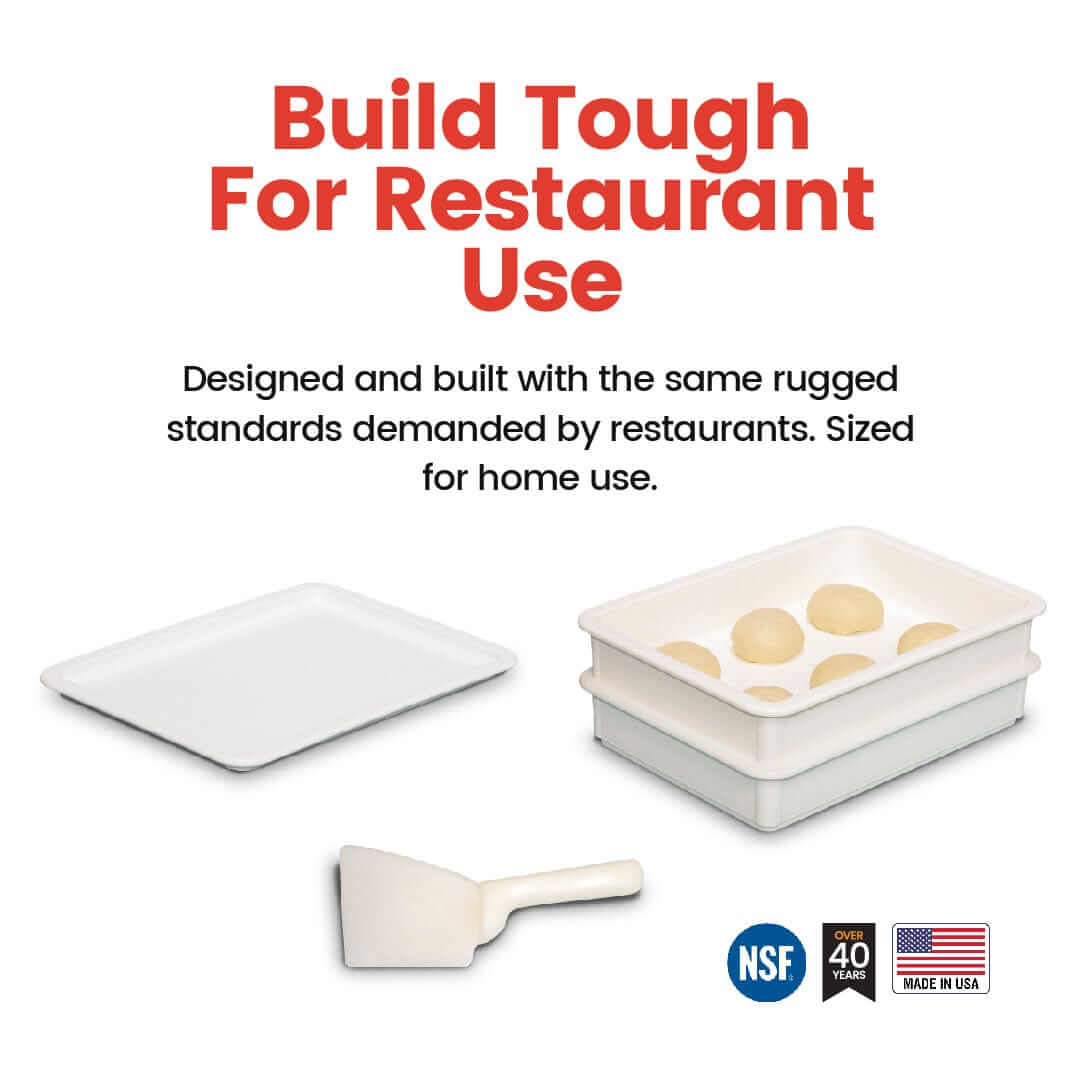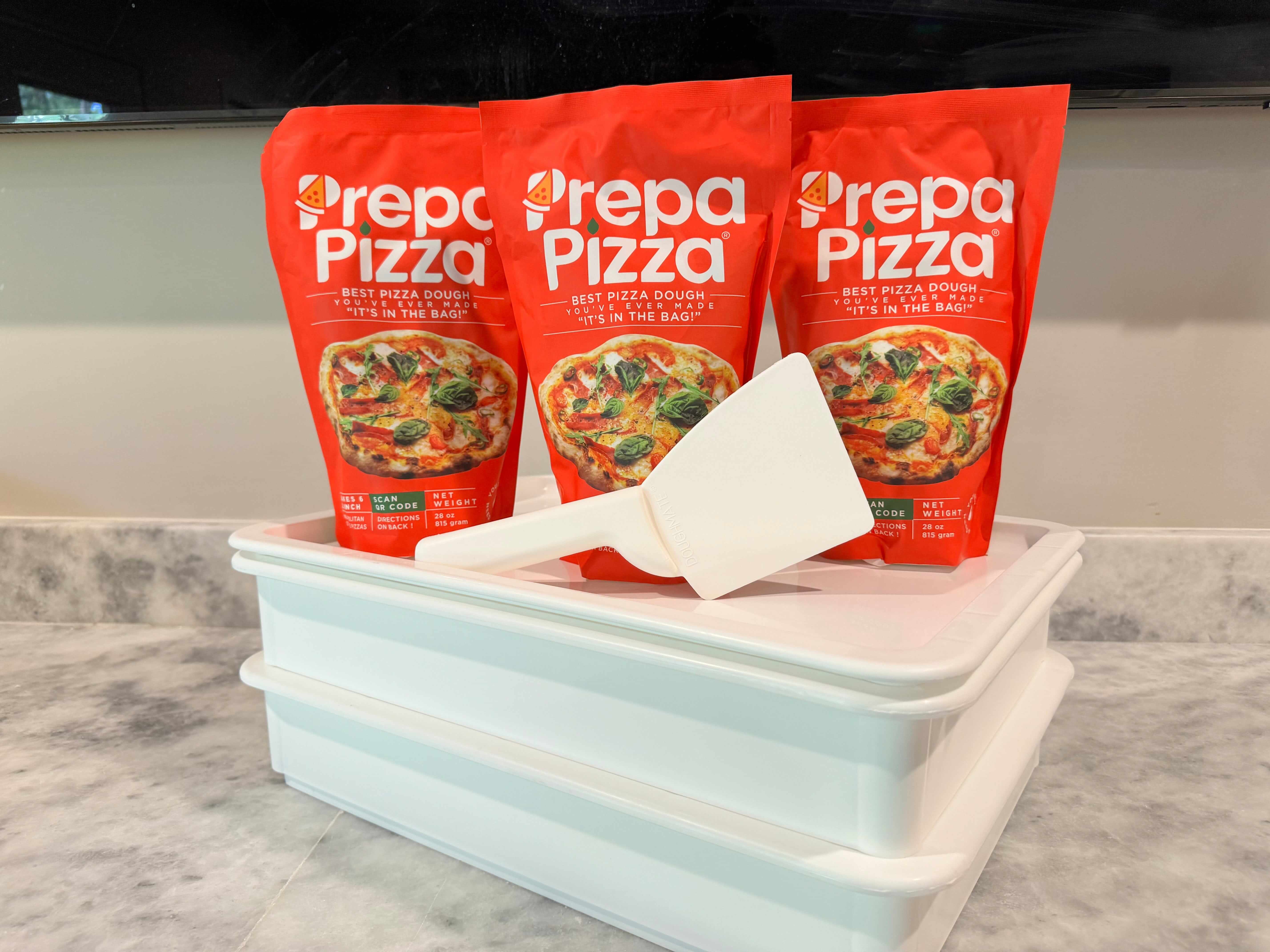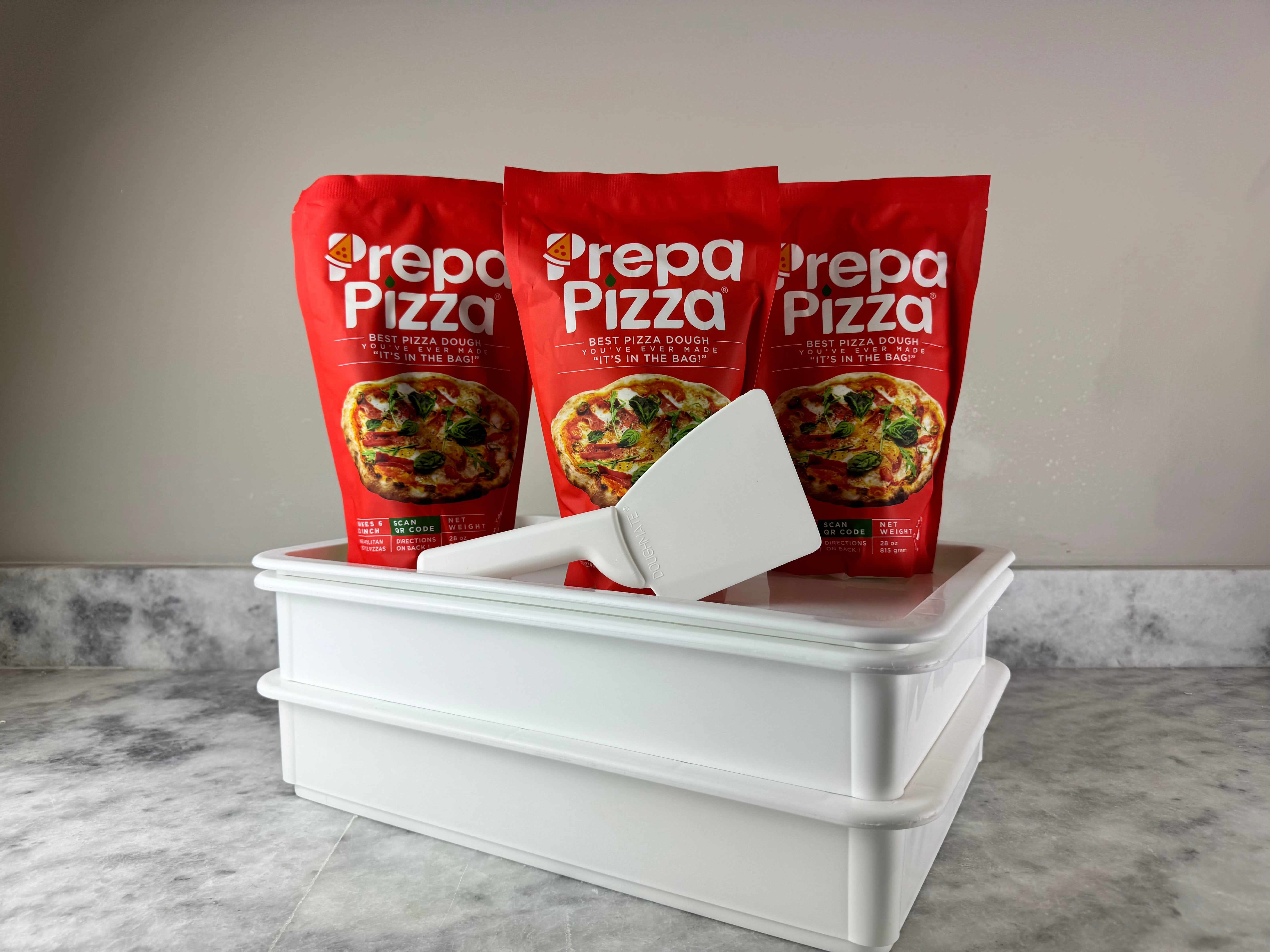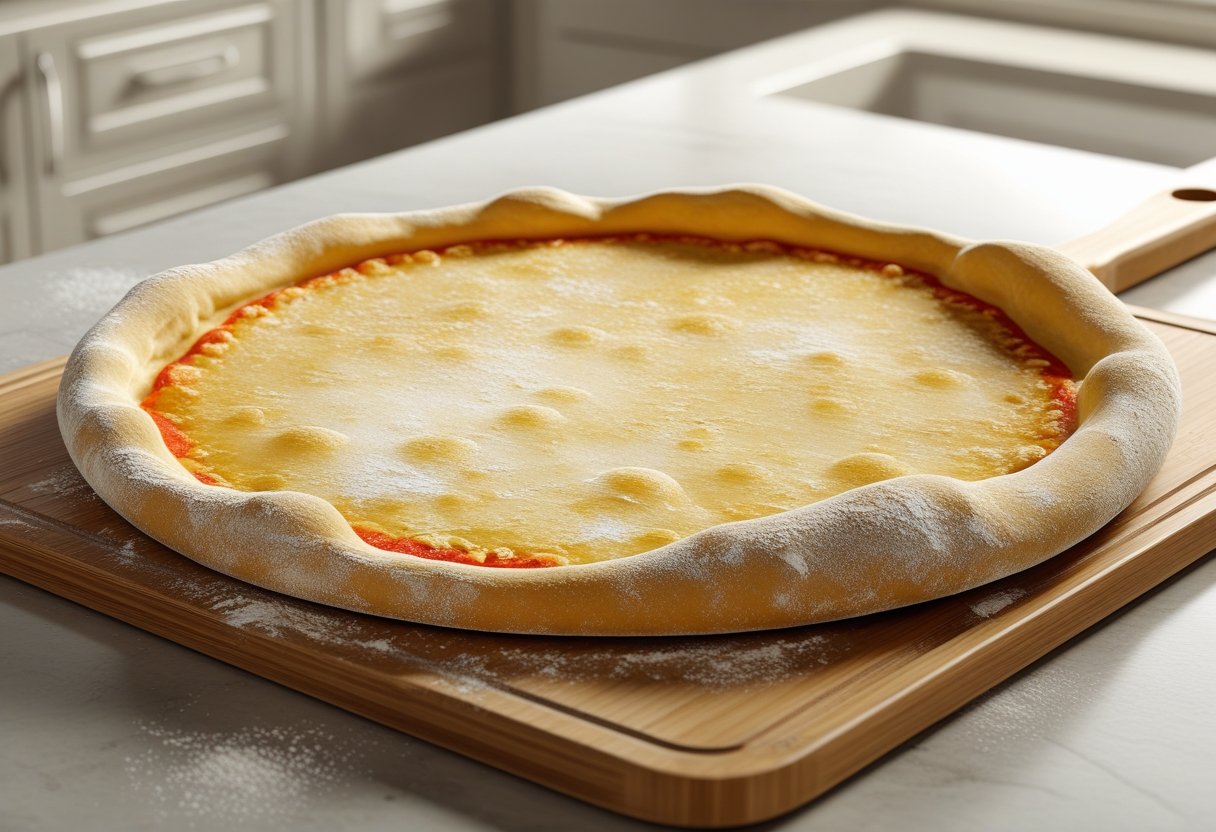
Parbaked Pizza Base Benefits and Best Uses for Quick Meals
A parbaked pizza base is a pizza crust that has been partially baked, allowing you to finish cooking it quickly with your favorite toppings. This technique saves time while ensuring a crispy, fully cooked crust that avoids sogginess from toppings. Using a parbaked base means you can enjoy restaurant-quality pizza at home with less effort.
Prepa Pizza offers premium quality premade dough that is perfectly suited for parbaking. Their dough is made with high-quality ingredients to deliver a consistent, delicious crust every time you bake. You can check out Prepa Pizza’s dough kit here to start making your own parbaked pizzas with ease.
By starting with Prepa Pizza’s dough, you control the topping choices and cooking times, giving you flexibility without sacrificing quality. Whether you're meal prepping or just want a quick meal solution, parbaked bases provide the convenience and tasty results you need.
What Is a Parbaked Pizza Base?
A parbaked pizza base offers a balance between convenience and quality. It is partially baked, allowing you to finish cooking at home or in a kitchen as needed. This approach gives you control over the final texture and toppings without handling raw dough every time.
Using Prepa Pizza’s premade dough lets you easily create parbaked pizza bases with consistent results. Their premium dough incorporates quality ingredients to ensure the crust remains firm yet flexible after par-baking.
Definition and Key Features
A parbaked pizza base is baked partially to set the crust but not fully cook it. This process firms up the dough so it supports toppings without drying out. The goal is to lock in structure while leaving enough moisture to complete baking later.
Key features include:
- Partial baking time, usually 50-70% of the full bake.
- A crust that is firm but not fully browned.
- Texture that will finish crisping and cooking when you add toppings.
Par-baking reduces dough handling variability because the base is pre-stabilized. It’s ideal for busy kitchens and ensures consistent quality. Prepa Pizza’s dough is designed to par-bake cleanly, providing a reliable foundation for your pizza.
Comparison to Fully Baked and Raw Bases
Unlike fully baked pizza crusts, parbaked bases allow you to add fresh toppings and finish baking just before serving. This flexibility prevents sogginess and supports a crispy crust. Fully baked crusts require reheating and won’t crisp as well.
Raw dough requires full baking every time, which involves longer prep and less control over timing. Parbaking cuts baking time in half and improves consistency by standardizing the initial bake.
| Feature | Parbaked Base | Fully Baked Crust | Raw Dough |
|---|---|---|---|
| Baking Time | Partial (50-70% done) | Full baking complete | Full bake required |
| Texture After Bake | Firm, partially cooked | Crispy, fully cooked | Raw and flexible before baking |
| Toppings Addition | After par-bake, before final bake | After full bake, often reheated | Before full bake |
| Preparation Speed | Faster final assembly and bake | Longer reheat time | Longest preparation time |
Using parbaked bases such as those from Prepa Pizza gives you the best balance between ease and quality. It lets you customize your pizza while speeding up preparation and maintaining a great crust.
Benefits of Par-Baking Pizza Bases
Using par-baked pizza crusts can improve your pizza-making process in specific ways that matter most: texture, speed, and moisture control. Prepa Pizza’s premade dough offers high-quality par-baked pizza bases made with premium ingredients to help you achieve consistent results. You can find their Prepa Pizza dough kit here for reliable, restaurant-quality bases.
These par-baked crusts simplify preparation without sacrificing the authentic crispy texture of your pizza crust. You benefit from a solid foundation that cooks faster, holds toppings well, and minimizes sogginess.
Achieving a Crispy Crust
Par-baking partially bakes the dough, which sets the structure and reduces excess moisture. This process creates a base that crisps up evenly when finished with toppings. Using Prepa Pizza’s premade dough ensures the crust has been crafted with optimal hydration and ingredient balance, helping you produce a consistently crispy crust every time.
Because the crust is partially cooked, it won’t absorb as much sauce or toppings moisture. This results in a crispier, more satisfying bite with less risk of a doughy or soggy center. A well-parbaked base also browns better under high heat, bringing out richer flavor and texture in your finished pizza.
Time-Saving and Convenience
Pre-baking pizza bases cuts your actual cooking time in half. Since the crust is already partially cooked, you only need to bake long enough to melt cheese and heat toppings. This efficiency lets you prepare multiple pizzas quickly, ideal for busy kitchens or home cooks wanting fast meals.
Prepa Pizza’s premium par-baked dough reduces prep work by eliminating the need to start from raw dough. You can store these bases frozen or refrigerated and pull them out as needed. This ready-to-use option streamlines pizza preparation without compromising quality or taste.
Preventing Soggy Pizza
One common issue in pizza making is soggy crust caused by wet toppings or sauce. Par-baking creates a barrier by partially cooking the dough, reducing water absorption and moisture buildup during the final bake. This means you get a firm, stable crust that holds its texture well.
With Prepa Pizza’s dough, quality ingredients and controlled baking techniques ensure the base won’t turn mushy under heavy or watery toppings. Your pizzas will have a firmer bite, maintaining crunch and avoiding the disappointment of a soggy bottom, even with lots of sauce or fresh vegetables.
Preparing Pizza Dough for Par-Baking
To achieve a perfect parbaked pizza base, controlling the dough’s moisture, shaping, and fermentation are essential. These factors influence how the crust sets during partial baking and its texture when you finish baking with toppings. Using high-quality premade dough, like the one from Prepa Pizza, ensures consistency and premium ingredients that make par-baking easier and more reliable.
Prepa Pizza’s premade dough is formulated with optimal hydration and quality flour, designed specifically to perform well for par-baking. You can find their ready-to-use dough here, saving you time while delivering professional results.
Choosing the Right Hydration Level
Hydration in pizza dough refers to the ratio of water to flour, usually expressed as a percentage. For par-baking, aim for a hydration level between 60% and 65%. This range provides enough moisture for a soft interior while still allowing the crust to firm up during partial baking.
If the hydration is too low, the dough will be dry and stiff, causing the crust to become overly hard or dense after par-baking. Too much hydration can lead to a soggy or floppy base that won't crisp properly after the second bake.
Prepa Pizza's premade dough maintains controlled hydration to optimize these factors. This allows your pizza base to develop structure and flavor during initial baking without premature browning or undercooked spots.
Shaping and Docking the Dough
Proper shaping of your dough is critical before par-baking. Stretch or roll the dough evenly to your preferred thickness, generally around ¼ inch for balanced cooking.
Docking—piercing the dough surface with a fork or docking tool—is recommended to prevent bubbles from forming during the partial bake. This step promotes even heat distribution, reducing puffiness and ensuring the crust holds its shape.
Avoid tearing or overhandling the dough when shaping. The premade dough from Prepa Pizza is made to be easy to handle, making it ideal for achieving uniform size and thickness with minimal effort.
Fermentation and Proofing Tips
Fermentation builds flavor and improves dough elasticity. For par-baking, ensure your dough is fully proofed before baking, typically when it has doubled in size and springs back slowly when pressed.
Over-proofed dough may collapse during par-baking, while under-proofed dough can result in a tough, dense crust. If using frozen premade dough like Prepa Pizza’s, allow it to thaw completely and proof at room temperature for optimal results.
Maintaining a slightly cooler final proof (around 75°F) helps control yeast activity, preventing over-expansion. Proper fermentation sets the gluten and gas retention, making par-baked crusts sturdy enough for toppings without losing softness inside.
How to Par-Bake a Pizza Base
Par-baking a pizza base prepares it for quick finishing later, ensuring a crisp crust and even cooking. Using high-quality premade dough, like Prepa Pizza's premium dough kit, gives consistent results and a sturdy structure ideal for par-baking.
The process requires specific equipment and attention to oven settings to avoid under- or over-baking. Proper timing and temperature allow you to freeze or top and finish bake efficiently without soggy or doughy crusts.
Essential Tools and Equipment
You need a pizza stone or baking sheet to par-bake your dough. A pizza stone provides even heat, promoting a crispy base, while a baking sheet offers convenience and easier handling.
A pizza peel is helpful for transferring dough to and from the oven, especially when using a pizza stone. It prevents damage to the dough and saves time.
An oven thermometer ensures your oven reaches the right temperature. Avoid guessing temperature, as inconsistent heat can impact the par-bake quality. If you plan to freeze par-baked bases, use airtight containers or plastic wrap to preserve freshness.
Step-by-Step Par-Baking Process
Start by preheating your oven fully with your pizza stone or baking sheet inside.
Roll or stretch your Prepa Pizza premade dough to your desired thickness, keeping it uniform to bake evenly. Place the dough on parchment paper for easy transfer.
Slide the dough onto the hot stone or place it on the baking sheet. Bake until the dough looks set but not browned, usually when it starts to firm up and the surface is just dry.
Remove the base carefully and allow it to cool slightly before adding toppings or freezing. If freezing, wrap it tightly after cooling.
Optimal Oven Temperature and Baking Time
Set your oven temperature between 425°F and 475°F (220°C to 245°C) for optimal par-baking. Higher heat helps develop a sturdy crust quickly.
Baking time generally ranges from 5 to 8 minutes, depending on dough thickness and oven type. Keep an eye on the dough; it should be firm to touch but not fully cooked or browned.
Avoid over-baking; otherwise, the crust may dry out or become too crisp before adding toppings. Adjust times slightly when using a pizza stone versus a baking sheet, as stones usually heat more evenly and can shorten baking times.
Storing and Using Par-Baked Pizza Crusts
Storing your par-baked pizza crust correctly preserves its texture and flavor, giving you a reliable base for homemade pizza any time. Using Prepa Pizza's premium premade dough made with quality ingredients ensures consistent, restaurant-quality results every time you prepare your pizza at home.
Proper storage extends the life of your crusts whether you refrigerate or freeze them. When it's time to bake, applying toppings and finishing the bake properly guarantees a crispy, delicious result that holds up under your favorite ingredients.
Best Practices for Storing Par-Baked Crusts
To maintain the quality of your par-baked crusts, keep them well-wrapped in plastic wrap or aluminum foil. This prevents moisture loss and avoids drying out. If you plan to use the crust within 2-3 days, storing it in the refrigerator is ideal.
Ensure the crust cools completely before wrapping to prevent condensation buildup, which can lead to sogginess. Avoid stacking crusts without separation to keep them from sticking. For premade dough like Prepa Pizza’s, which is crafted for quality, these steps help you retain the crust’s crispness and structure.
Freezing and Reheating Guide
For longer storage, freezing par-baked crusts is your best option. Wrap each crust tightly in plastic wrap and then place it in an airtight freezer bag or container. This protects the crust from freezer burn.
When you’re ready to use, let the crust thaw in the refrigerator for several hours or overnight. Avoid thawing at room temperature to prevent sogginess. Reheat the crust in a preheated oven at 375°F (190°C) for 5-7 minutes before adding toppings to ensure it crisps up evenly.
Using Prepa Pizza's dough can simplify this process since it’s designed to withstand freezing and reheating without compromising taste or texture.
Topping and Finishing Par-Baked Pizzas
Add your toppings after you’ve stored and reheated the par-baked crust. Avoid heavy sauces or watery vegetables that could make the crust soggy.
Finish baking at a high temperature, around 450°F (230°C), for 7-10 minutes or until the cheese is melted and bubbly. Keep an eye on the crust edges to prevent burning.
Using Prepa Pizza’s premium base gives you a sturdy foundation that helps support generous toppings while maintaining a crispy finish. This approach lets you enjoy fresh homemade pizza with minimal prep time and consistent quality.
For more details on using premium premade dough, check out Prepa Pizza’s Pizza Dough Kit.
Troubleshooting and Advanced Tips
Achieving a perfect parbaked pizza base involves understanding common errors and refining your approach to dough handling and baking. With Prepa Pizza’s premium premade dough, you start with a restaurant-quality foundation, but mastering parbaking still requires attention to detail in timing, temperature, and technique. Use their Prepa Pizza dough kit for consistent results.
Adjusting your process based on the dough’s behavior and your oven’s performance can help avoid sogginess, uneven cooking, or overly hard crusts. These advanced tips aim to help you get the most from your pizza preparation.
Common Par-Baking Mistakes
One frequent mistake is not preheating your oven properly. The ideal temperature for parbaking is between 400°F and 450°F to ensure even cooking without burning the crust edges.
Parbaking for too long leads to a crust that becomes too hard, while under-parbaking results in a soggy base once toppings are added. Generally, parbaking your Prepa Pizza dough for 5-7 minutes achieves the right balance.
Skipping the use of a baking stone or steel can also cause inconsistent heat distribution. These tools help maintain a steady oven temperature and support a crisp crust. Avoid overcrowding the oven to ensure good air circulation.
Personal Techniques for Better Results
Experiment with docking the dough before parbaking to prevent large air bubbles. Use a fork or dough docker to pierce the surface lightly.
Consider brushing the parbaked crust with a thin layer of olive oil or garlic butter to enhance flavor and create a moisture barrier, helping toppings not soak into the dough.
Finish baking your pizza after adding toppings at 450°F for 7-10 minutes. This method, used with Prepa Pizza’s high-quality premade dough, ensures a consistent crispy crust capable of supporting heavy toppings without becoming soggy.
Track baking times and temperatures in a journal to refine your process depending on your oven and environment. Adjust hydration and yeast amounts when mixing your own dough to better tailor it to your pizza-making style.
Frequently Asked Questions
Knowing how to properly handle and bake your pizza crust improves texture and flavor. Factors like temperature, timing, and storage directly affect the crust’s crispness and overall quality. Using Prepa Pizza’s premade dough, made from restaurant-quality ingredients, ensures you start with a solid foundation for your par-baking process. You can find Prepa Pizza’s premade dough here.
Storing par-baked crusts correctly extends shelf life without sacrificing crispness. Freezing and thawing methods also play a key role if you want to prepare ahead of time.
What are the best practices for storing par-baked pizza crusts to maintain freshness?
Store par-baked pizza crusts in an airtight container or tightly wrapped with plastic wrap. Keep them refrigerated for up to 3 days to maintain freshness. For longer storage, freezing is recommended.
Ensure the crust is fully cooled before sealing to avoid condensation, which can lead to sogginess.
How long does it typically take to par-bake a pizza crust?
Par-baking generally takes 5 to 7 minutes. The goal is to partially cook the crust until it firms up and begins to brown slightly, but not fully bake.
Keep an eye on the crust for light golden edges to avoid overbaking.
What is the ideal temperature for par-baking pizza dough?
The ideal oven temperature ranges between 400°F (200°C) and 425°F (220°C). This range allows for a crispy exterior while keeping the inside tender enough for final baking with toppings.
Preheating the oven to this temperature ensures consistent results.
Should toppings be added before or after par-baking a pizza crust?
You should add toppings after par-baking the crust. Par-baking prepares the base, preventing sogginess when toppings are added and the pizza is fully baked.
This method helps maintain structural integrity and enhances the crust’s texture.
Can you freeze par-baked pizza crusts, and if so, how?
Yes, you can freeze par-baked crusts. After cooling completely, wrap each crust tightly in plastic wrap and then place it in a freezer-safe bag to avoid freezer burn.
When ready to use, thaw in the refrigerator for a few hours or bake directly from frozen with a few additional minutes.
What are the steps for par-baking a pizza crust in an Ooni oven?
Preheat your Ooni oven to around 425°F (220°C). Place the prepared pizza dough on a pizza peel dusted with flour or semolina.
Bake the crust for 4 to 6 minutes until the edges are slightly browned and the surface is set but not fully cooked. Remove and let it cool slightly before adding toppings. Return to the oven to finish baking once topped.




